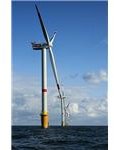When you start an online engineering degree program, you position
yourself for exciting career options--not to mention some extremely
interesting engineering courses. Engineers work across most of the
employment spectrum, offering their services in design and
implementation of solutions that make for a more efficient world.
Depending on their specialties, engineers work in high technology,
business, finance, science, healthcare, civil engineering and
infrastructure, healthcare, education, manufacturing, and the
government.
Earning an Engineering Degree Online
Students
who are drawn to the engineering professions are often inquisitive,
love to solve problems, and have a keen interest in computers. They like
to research solutions, test their findings, and trouble-shoot
technology as it is applied. If you don't think engineering is a diverse
field that attracts a wide range of thinkers, consider this: There are
17 different engineering specialties listed in the Standard Occupational
Classification (SOC) system maintained by the Federal Government.
Admissions
requirements and pre-requisites for engineering programs may include
previous coursework in mathematics (through calculus), hard science
(chemistry, biology, physics), and general education in the liberal arts
and humanities.
Most engineers find their way into their
profession by completing a bachelor's degree. Online engineering courses
at the undergraduate level prepare students with a foundation in
physical science, mathematics, and life sciences, while additional
engineering courses expose undergrads to a range of disciplines,
including:
- Aerospace
- Agriculture
- Biomedical Technology
- Chemistry
- Civil Engineering
- Computer Science (Software and Hardware Development)
- Electrical Engineering
- Mechanical Engineering
- Mining
- Nuclear Technology
- Petroleum science
Depending on your chosen discipline, you can also pursue
post-graduate work in an applied field within engineering to qualify for
management or leadership roles in research or teaching.
Engineering Career Outlook
The
U.S. Bureau of Labor Statistics (BLS) predicts that engineering
employment will grow by 11 percent during the 2006-2016 decade, with a
large spike of 21 percent of the new jobs created in the booming field
of biomedical engineering. Jobs for environmental engineers also look
especially good, according to the BLS, with a 25 percent rise in
employment predicted for the 2006-2016 decade.
Double-digit
employment increases are also predicted for engineers in marine
sciences, mining, aerospace, civil engineering, and health and safety
professions. Fields in materials, electrical, computer hardware, and
chemical engineering should undergo growth, too, but at less than 10
percent over the 2006-2016 decade.
Earnings in Engineering
Starting
salaries for engineering grads, the BLS reports, are traditionally
higher than entry level pay for most other professions. However, most
engineers are expected to continue their educations to remain
competitive in the workplace as systems and software continues to
evolve.
Here are the median, 2008 annual earnings for engineers by discipline as reported by the BLS:
- Aerospace Engineers, $92,520
- Agricultural Engineers, $68,730
- Biomedical Engineers, $77,400
- Chemical Engineers, $84,680
- Civil Engineers, $74,600
- Computer Hardware Engineers, $97,400
- Electrical Engineers, $82,160
- Environmental Engineers, $74,020
- Health and Safety Engineers, $72,490
- Industrial Engineers, $73,820
- Marine Engineers and Naval Architects, $74,140
- Mechanical Engineers, $74,920
- Mining and Geological Engineers, $75,960
- Nuclear Engineers, $97,080
- Petroleum Engineers, $108,020
Even with slowdowns in the economy, the BLS reports,
engineers are indispensable employees within companies, schools, and
laboratories, undertaking long-term research and development, making
engineering a powerful career choice. Choose your online engineering courses wisely.
By
Kelli D Smith


